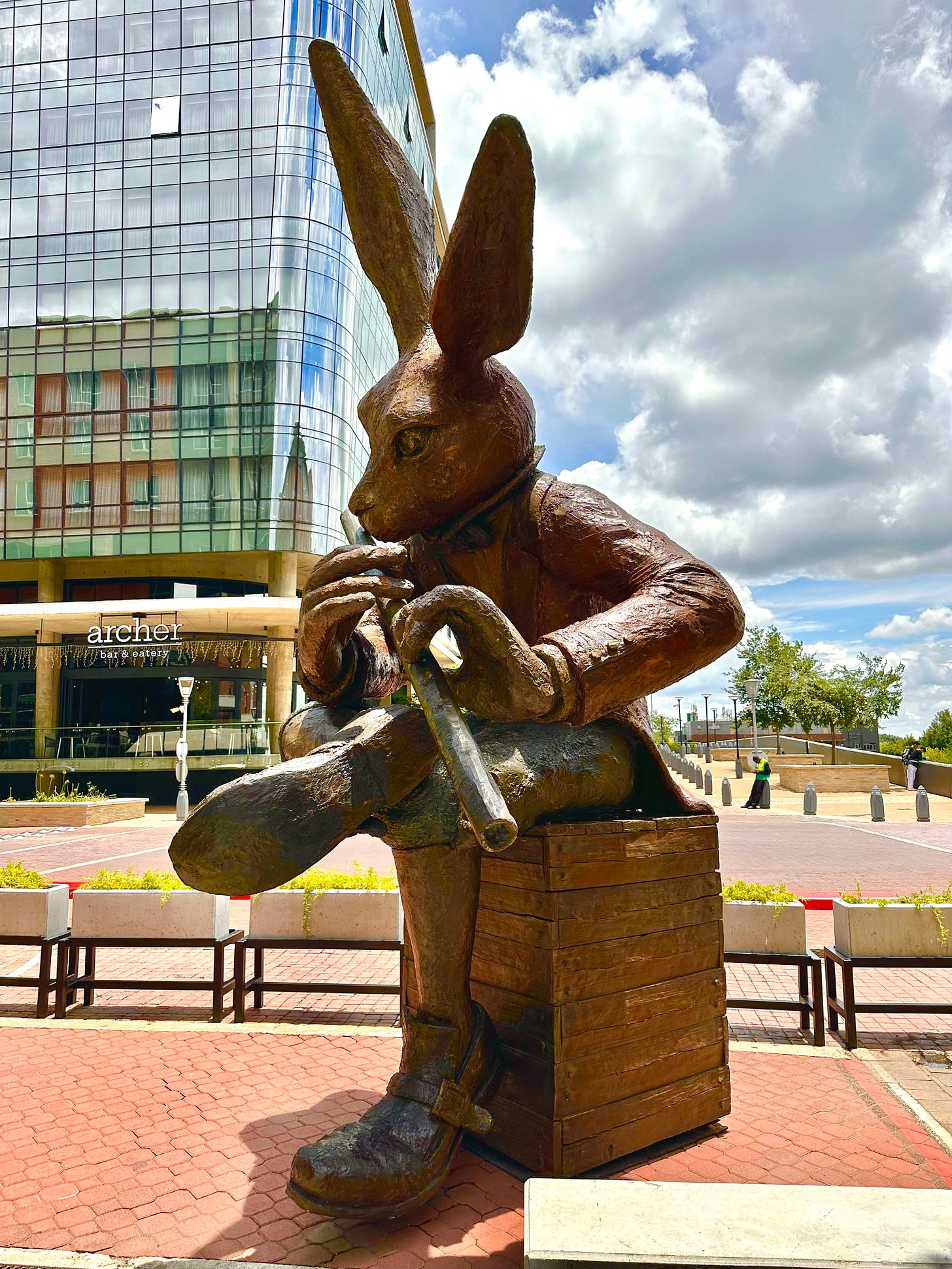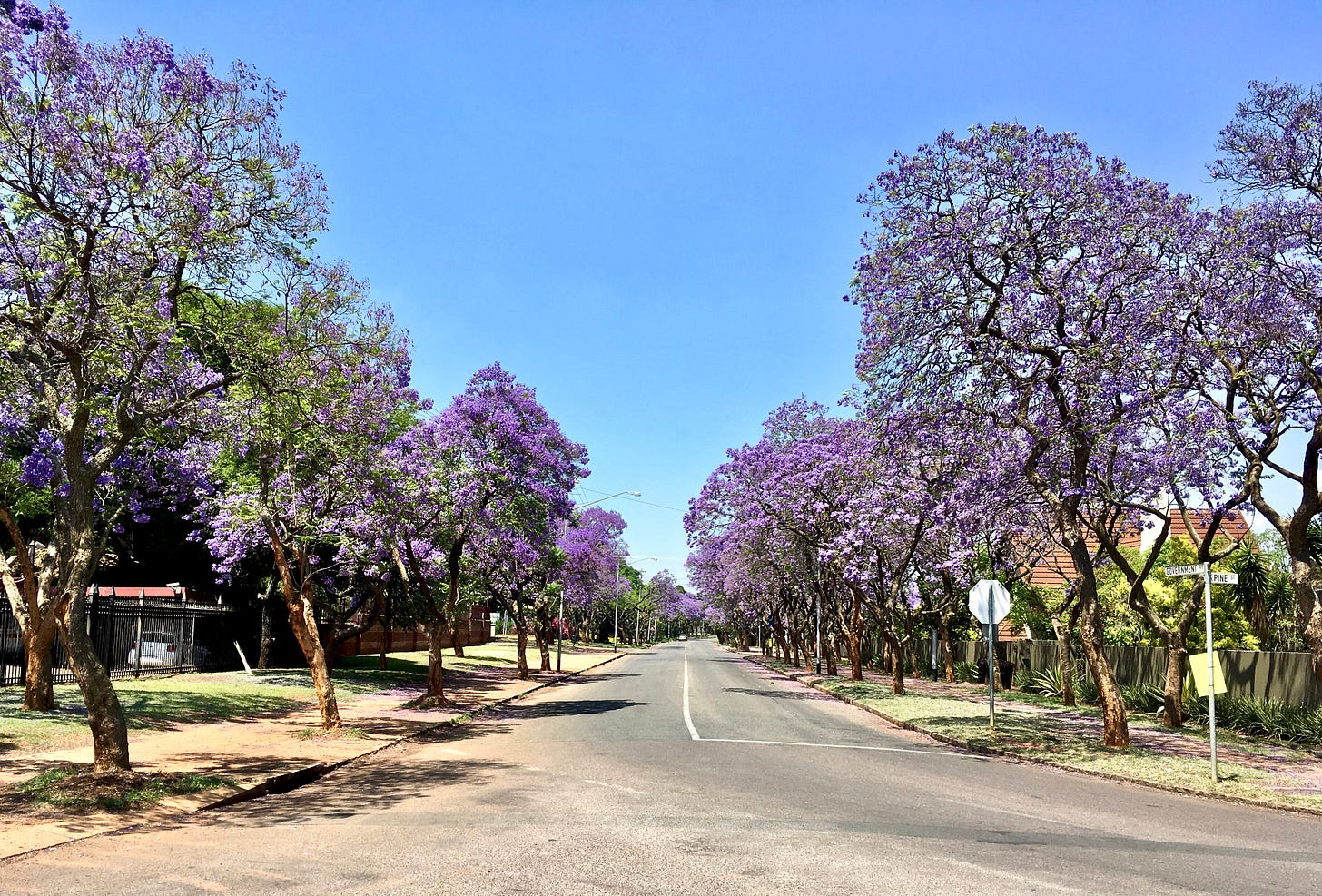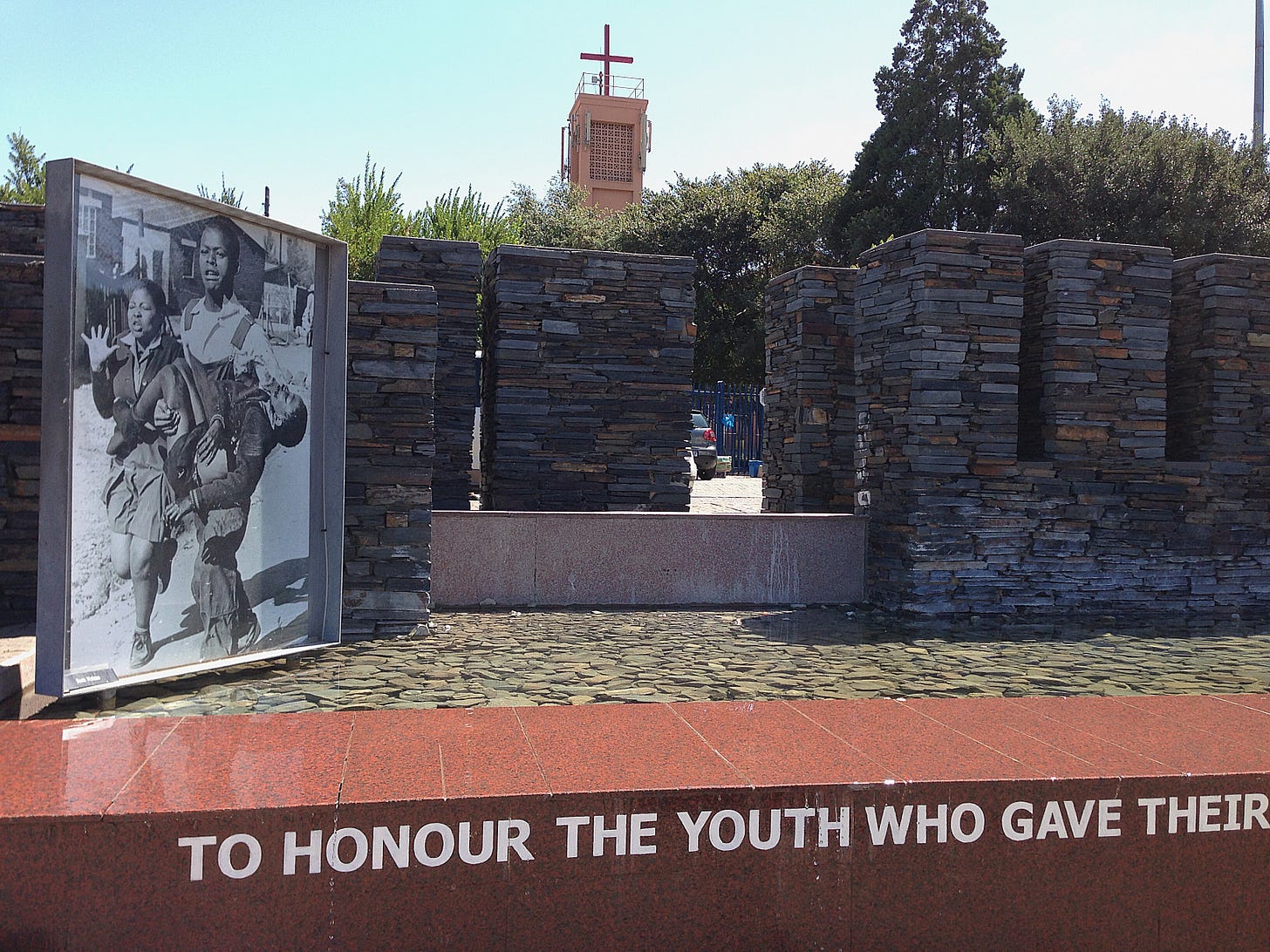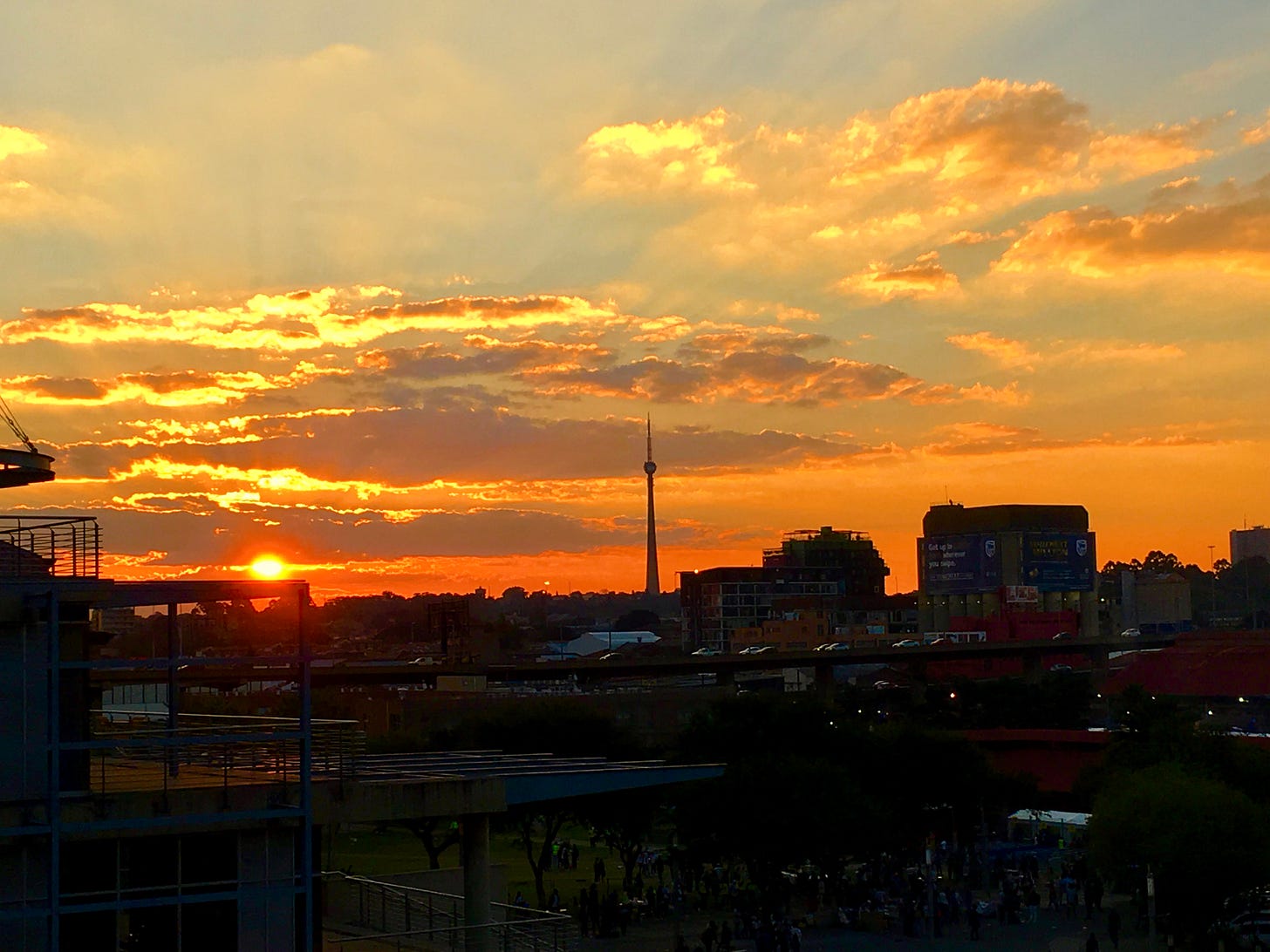👉 Welcome to Jozi: Safer, Cooler, and Way More Fun Than the Rumors
A guide to exploring Johannesburg beyond the stereotypes.
For decades, Johannesburg has had a reputation problem. For years, headlines painted it as dangerous, chaotic, even unvisitable. Much of that fear was rooted in racism and fear of “the other.” Today, and especially since the end of Apartheid in 1994, the stereotype persists in a new form: that Joburg is crime-ridden and unsafe to walk in.
The truth? Like any big city, Johannesburg has its rough neighborhoods and its crime, but it also has lively, walkable districts, world-class culture, and some of the friendliest people you’ll meet. Ignore the fearmongers. This city doesn’t just deserve your time, it will reward you many times over for stepping out of your comfort zone.
Safe, Walkable, and Easy to Explore
Johannesburg has plenty of neighborhoods where you can walk freely. Rosebank, Sandton, and Melrose Arch are modern, upscale, and well-patrolled. Melrose Arch in particular feels like a gated city-within-a-city—restaurants, hotels, and shops tucked into neat, secure streets.
But if you only stay there, you’ll miss the point.
Getting around is easy. Uber works reliably and cheaply. Like many major cities, there used to be clashes between Uber and local taxi drivers, but those days are largely past. Like anywhere, use common sense: keep valuables close, and don’t wander into unfamiliar areas late at night.
Start With a Hop-On Hop-Off Tour
On your first day, get your bearings with the City Sightseeing Johannesburg bus tour. It loops past landmarks, museums, and neighborhoods you might otherwise miss, and it’s a safe way to get a sense of the city before digging deeper. It allows you to have a little taste of everything from the buffet before deciding which dishes you want to go back for another bigger serving of.
Maboneng: The Creative Core
This is the Joburg people don’t expect: Maboneng, a once-derelict district transformed into a hub of art, food, and nightlife. Market stalls overflow with food from across the continent. Independent shops sell fashion, art, and crafts. Cafés spill onto sidewalks. There’s music everywhere.
Yes, it’s in the inner city. Yes, you should keep your wits about you. But Maboneng’s energy is what makes Johannesburg exciting; it’s a place where the city feels alive, energetic, and unpolished. Settle in for a coffee or a drink, and you’re almost guaranteed to strike up a conversation with some locals once they hear your accent. But locals doesn’t just mean South Africans, Maboneng is home to people from every corner of Africa and you’re just as likely to meet Nigerians or Mozambicans as you are South Africans. This is the energy of Joburg.
Pretoria and the Jacarandas
If you’re in town during October–November, head to Pretoria, just under 45 minutes away on the Gautrain. Entire streets turn purple as the jacaranda trees bloom. The city center itself is walkable, with spots like the Union Buildings, Church Square, and historic neighborhoods. If you only have one day, that’s fine, but if you can take more Pretoria will reward you with decades of history, monuments, and places well off the safari tourist trail.
Jacaranda season in Pretoria is one of South Africa’s most photogenic moments that the tourist brochures won’t tell you about, and it’s an easy half-day escape from Joburg. Sure, you’ll find some jacarandas in Joburg as well, but Pretoria is where they really shine!
Constitution Hill: A Must-See
Don’t miss Constitution Hill. Once a notorious prison where activists like Nelson Mandela and Mahatma Gandhi were held, today it’s home to South Africa’s Constitutional Court. Tours show you the stark prison blocks alongside art installations and courtrooms that symbolize the country’s democratic future.
It’s sobering, powerful, and essential for understanding not just Joburg but the history of South Africa. If you’re coming from the US or Europe you’re likely going to feel very uncomfortable exploring the history of Apartheid, especially when you realize that South Africans don’t shy away from the topic. Nelson Mandela strongly encouraged all South Africans to engage in dialog about their shared past to learn, grow, and move forward as a rainbow nation…and given the chance they will share that experience with you and you’ll have the same opportunity for growth.
Soweto: Stay a While
A visit to Johannesburg isn’t complete without Soweto. Tour the Hector Pieterson Museum to learn about the 1976 student uprising, then spend the evening in a shebeen (local tavern). Better yet, stay overnight. You’ll find guesthouses and homestays where locals welcome you in and you’ll get a local understanding of modern South Africa that’s not to be found in large tourist hotels or safari lodges.
Soweto isn’t just history, it’s community, music, football, and nightlife. Take the time to let it shine and you won’t regret it.
Joburg at Sunset
Whether you call it Joburg, Josie, or Egoli (“the City of Gold”), this skyline knows how to put on a show. Catch the sun setting behind the Hillbrow Tower, and you’ll see the city in its best light…literally. There’s nothing quite like an African sunset, and Joburg never fails to deliver.
Getting There
Johannesburg is probably Africa’s most connected hub. Direct flights arrive daily from Europe (BA, Lufthansa, Air France, KLM, and more). From the U.S., Delta and United both fly nonstop. That makes Joburg one of the easiest African cities to reach, and one of the most rewarding to actually explore. You really have no excuse not to give it a chance!
5 Tips to Make Your Johannesburg Trip Count
🚌 Do the hop-on hop-off bus. It’s the safest, simplest way to get oriented.
🎨 Spend a Sunday in Maboneng. Markets, food, music: Joburg at its most vibrant.
🌸 Time your trip for jacaranda season. Pretoria’s streets turn purple in Oct–Nov.
⚖️ Visit Constitution Hill. Heavy history, hopeful future…you’ll leave moved.
🍻 Stay in Soweto. A night in a shebeen or guesthouse shows you the real Jozi that few tourists get to experience






